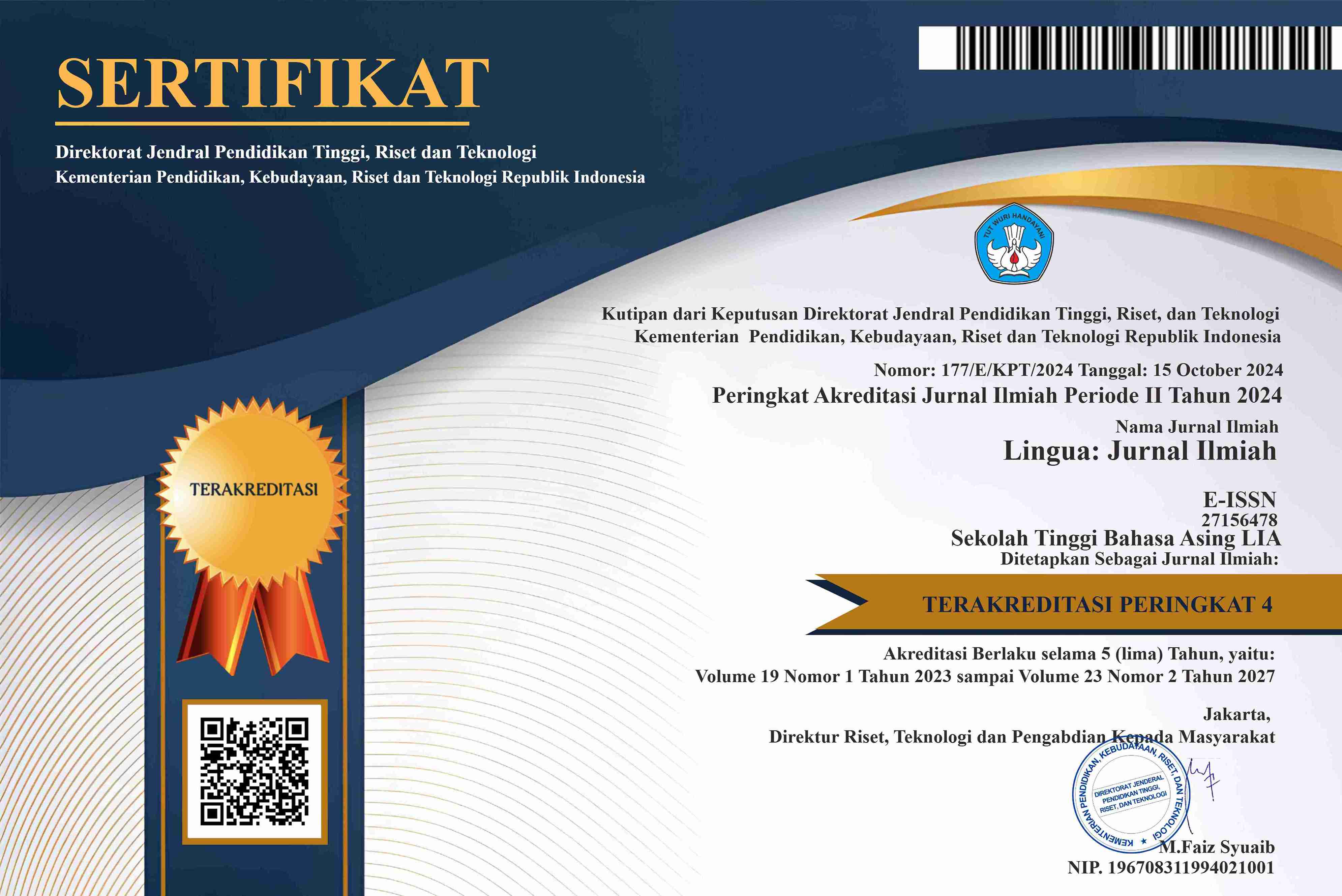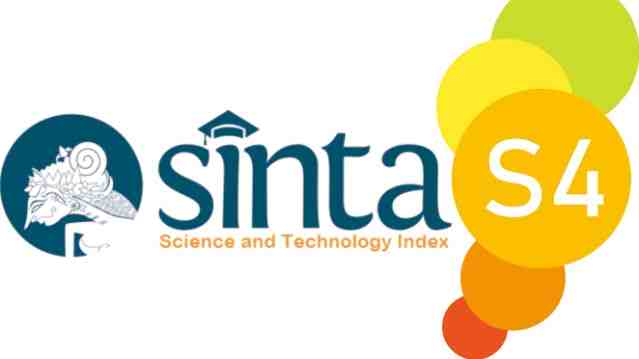ANALISIS MAKNA KATA KAKERU (KAJIAN LINGUISTIK KOGNITIF)
Kata Kunci:
polysemy, cognitive linguistics, kakeru, semantics, meaningAbstrak
The existence of polysemy in Japanese can be one of the factors causing difficulties
in learning Japanese. In addition, polysemy may make Japanese language learners
misunderstand the meaning of a word in a sentence which causes errors to occur
either when learning Japanese or when communicating with other people using
Japanese. The purpose of this study is to describe the polysemy of the word kakeru
in Japanese using a study of cognitive linguistics. This study uses a qualitative
descriptive research method. Data sources consist of Nihongo Daijiten (Tadao,
1995), Kokugo Jiten (Matsumura, 2005), and the Japanese-Indonesian Dictionary
(Matsuura, 1994), and online media portals (Jakarta shinbun, Asahi shinbun,
Yomiuri shinbun, and corpus data from Ninjal-LWP). The results of this study
found that the basic meaning of the verb kakeru is menggantung with 13 expansion
meanings consisting of menaruh, menimbang, menuangkan, membungkus,
meningkatkan, memercayakan, mengamankan, and rentang/jarak which has the
form of metaphorical style, then there’re membayar, mengalikan, and
menghabiskan for the form of metonymy style, and the last one is rentang/jarak for
the form of synecdoche style.
Unduhan
Diterbitkan
Cara Mengutip
Terbitan
Bagian
Lisensi
Hak Cipta (c) 2024 Chintia Sari Piranawati

Artikel ini berlisensi Creative Commons Attribution-NonCommercial-NoDerivatives 4.0 International License.












